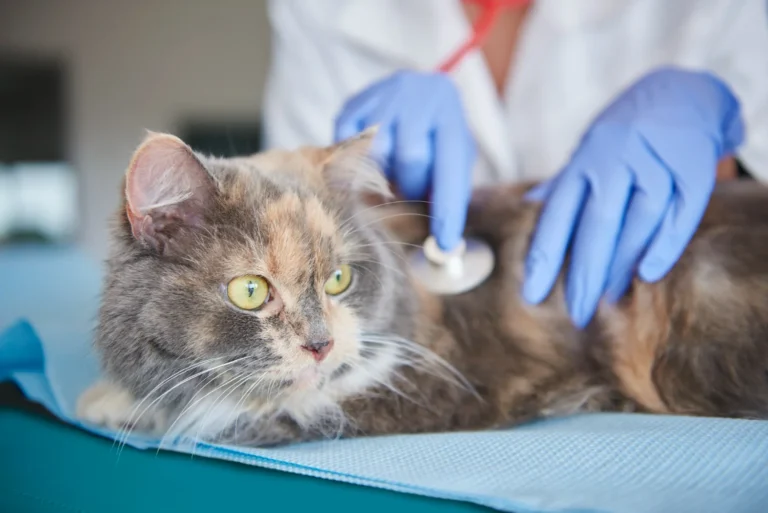
How Important is Cleanliness for Cats?
Keeping your cat clean is very important for both your health and your cat’s health. If your cat is not clean, it can develop diseases in its body.
Additionally, if the cat stays in your house in an untidy condition, it can spread germs around your home.
If you have small children, there is a chance they might also get sick from these germs.
Most of the time, small children like to spend more time with cats, and they do not easily understand whether a cat is dirty or clean.
That’s why you need to focus on keeping your cat and the surrounding environment clean while taking care of both your health and your cat’s health.
How Often Should I Bring My Cat in for Fur Grooming?
Regular grooming is important for cats for many reasons, including:
- Health: A well-groomed cat ingests less hair, which can prevent hairballs and digestive blockages. Grooming also helps cool a cat down on hot days. Cats sweat through their paw pads, and the evaporation of saliva after grooming can help cool them down.
- Fur: Brushing removes dead or tangled fur, reducing the chances of the cat ingesting fur.
- Circulation: Brushing stimulates the skin, improves circulation, and helps distribute natural oils throughout the coat.
- Parasites: Regular grooming helps prevent parasites by removing dirt, debris, and other parasites from the fur.
How often a cat needs grooming depends on its coat type:
Cats with Long Fur: For a long-haired cat, it’s generally recommended to take them to a professional groomer for a hair trim at least every few months, depending on how quickly their fur grows and how well you manage their coat at home with daily brushing. Some may need grooming as often as every 6-8 weeks, especially during heavy shedding seasons.
Cats with Short Fur:
Cats with short hair only need to be brushed once a week. Use a metal comb to loosen dead fur, starting at their head and working toward the tail. With a bristle or rubber brush, do the same to remove the dead hair. Always be careful around your cat’s face, belly, and chest.
When Should You Start Grooming Your Cat?
You should start grooming your cat as soon as you bring them home as a kitten, ideally between 2-7 weeks old, to gradually acclimate them to the process and make it a positive experience. This early introduction helps them become comfortable with being handled and groomed throughout their life.
How to Clean Cat Ears?
Use a cat ear cleaning solution, cotton balls, a clean towel, and a damp cloth. Put a few drops of the solution into your cat’s ear, following the instructions on the packaging.
Avoid touching the ear with the tip of the bottle. Gently massage the base of your cat’s ear for about 20–30 seconds to help distribute the solution and break up any wax or debris.
Use a compress to wipe away excess liquid and impurities from the outer ear. Let your cat shake their ears to help flush out the cleaner. Give your cat a treat to encourage good behavior.
Tips to Keep in Mind:
- Clean when needed: Over-cleaning can cause irritation and infection. Most cats have clean ears and don’t need frequent cleaning. However, you should clean their ears if you notice an odor or discharge.
- Be cautious with cotton swabs: Inserting cotton swabs too deeply can damage the eardrum, potentially causing pain and infection. It’s best to clean only the visible outer ear with a cotton ball.
- Don’t rub vigorously: Rubbing a cat’s ears too hard can cause itching and discomfort.
- Avoid using water: Water can get trapped in the ear canal, creating a moist environment that promotes yeast and bacterial growth, leading to infections. Always use a specially formulated ear-cleaning solution.
Signs of Ear Problems:
If you notice any of the following symptoms, take your cat to the vet:
- Dark brown or black discharge
- Head tilting
- Hearing loss
- Disorientation
- Loss of balance
- Redness or swelling of the ear flap or canal
- Strong odor from the ear
- Wax buildup near or on the canal
How to Clean Cat Teeth?
Regular dental care is important for preventing dental disease.
To clean your cat’s teeth, you can use:
- Toothbrush: Brushing is the best way to keep your cat’s teeth healthy because it removes plaque and slows periodontal disease. Training your cat to enjoy toothbrushing takes time and patience.
Step-by-Step Guide:
- Choose the right toothpaste: Use only cat-specific toothpaste. Human toothpaste is toxic to cats.
- Get the right toothbrush: Use a soft-bristled toothbrush designed for cats, a finger brush, or even a gauze pad.
- Start early: Begin brushing when your cat is young to help them get used to the process.
- Introduce the toothbrush: Let your cat sniff and lick the toothbrush to get familiar with it.
- Apply toothpaste: Place a small amount on the toothbrush or your finger.
- Lift the lip: Gently expose the teeth and gums.
- Brush gently: Use small, circular motions on the outer surfaces of the teeth.
- Start slow: Begin with a few teeth and gradually increase as your cat becomes more comfortable.
- Reward your cat: Give treats or praise after each session to create a positive experience.
Signs of Dental Problems:
Take your cat to the vet if you notice:
- Bad breath
- Red, inflamed, or bleeding gums
- Excessive drooling
- Loose teeth
- Tartar build-up
- Receding gum line
- Reluctance to eat
- Behavior changes
How to Clean Cat Eyes?
Cleaning a cat’s eyes helps remove dirt and secretions that could lead to infection.
Steps to clean your cat’s eyes:
- Use cooled boiled water or a sterile eye wash solution.
- Use a cotton ball or pad dipped in the solution to wipe each eye.
- Use a fresh cotton ball for each eye.
- Clean regularly whenever you notice discharge.
Signs of Eye Problems:
If you notice any of the following symptoms, take your cat to the vet:
- Eye discharge
- Redness
- Cloudiness
- Pupil changes
- Third eyelid visibility
- Squinting or blinking
- Sensitivity to light
- Lumps
How to Cut Your Cat’s Nails?
Cutting your cat’s nails is important to prevent overgrowth, discomfort, and potential infections.
To trim your cat’s nails:
- Hold their paw gently.
- Press on the pad to extend the nail.
- Use cat-specific nail clippers to trim only the sharp tip.
- Avoid the pink “quick,” which contains blood vessels and nerves.
- Reward your cat with treats to keep them calm.
Does My Cat Need a Bath?
Cats are generally clean animals and groom themselves. Bathing is not necessary unless:
- Your cat is extremely dirty.
- There is a strong odor that grooming cannot remove.
- Your cat has a medical condition that requires bathing.
If only a small area is dirty, you can wipe it with a damp cloth instead of giving a full bath. Always use lukewarm water.
How to Keep a 0-4 Week Old Kitten Clean?
Kittens under 4 weeks old cannot clean themselves, so you must keep them clean.
- Wipe their bodies with a cloth soaked in lukewarm water.
- Avoid getting them too wet.
- Keep their body as dry as possible while cleaning.
By following these steps, you can ensure your cat stays clean and healthy.



